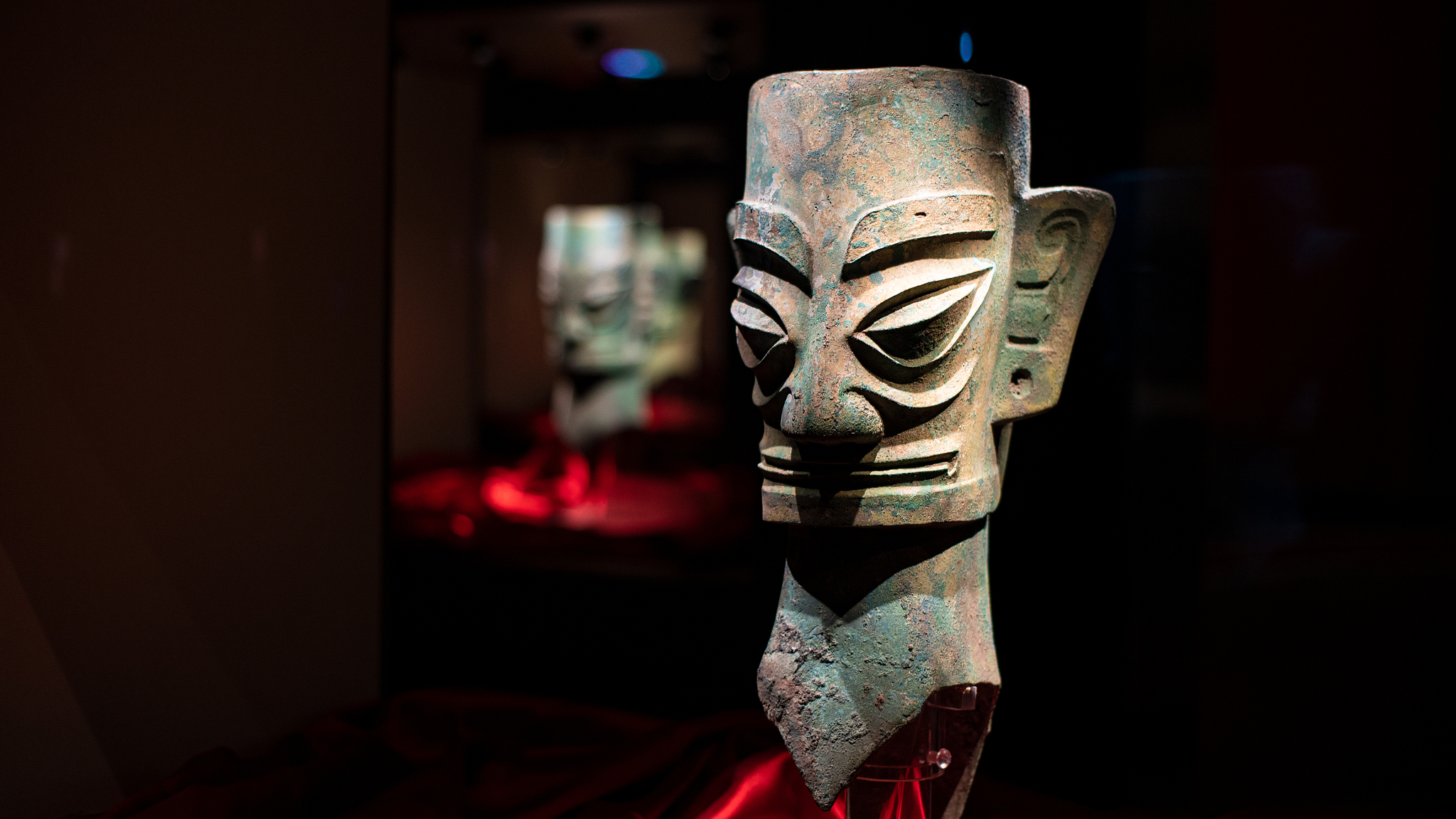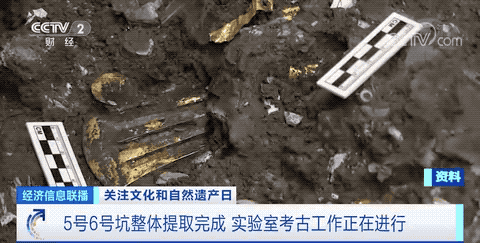
A bronze mask displayed at the Sanxingdui Museum in Guanghan, southwest China's Sichuan Province, December 22, 2019. /CFP
A bronze mask displayed at the Sanxingdui Museum in Guanghan, southwest China's Sichuan Province, December 22, 2019. /CFP
Archaeologists have discovered a bronze altar from pit No. 8 at the Sanxingdui archaeological site in Guanghan City, southwest China's Sichuan Province, China Media Group reported on Sunday.
The bronze altar is nearly one meter high, and features upper mythical creatures that are separated from a lower platform. Archaeologists extracted the mythical creatures on Saturday, and the bronze platform will be extracted on Sunday.
At present, half the excavation work in No. 8 pit has been completed, and the excavation of No. 7 pit has entered the final stage. No. 7 pit contains a large number of bronze fragments and jade articles. Pits No. 5 and No. 6 have been completely extracted and excavated to a laboratory. In addition, the earliest excavated pits, No. 3 and No. 4, have been excavated and are now sealed.
The most important find at pit No. 6 was a rectangular wooden box, which has been taken to the cultural relics center.

Excavation of No. 5 and No. 6 pits in Sanxingdui archaeological site has been completed. /CMG
Excavation of No. 5 and No. 6 pits in Sanxingdui archaeological site has been completed. /CMG
More than 12,000 newly unearthed cultural relics have been discovered in this round of archaeological excavation at Sanxingdui, including about 2,400 near-complete items.
Dating back over 3,000 years, the Sanxingdui ruins have shed light on the ancient Shu civilization and cultural origins of the Chinese nation, and are regarded as one of the most significant sets of ancient remains found in the 20th century.

